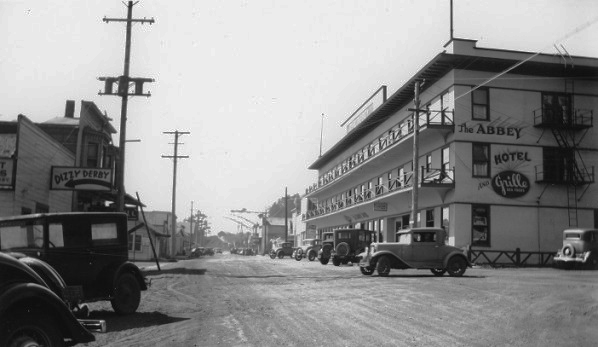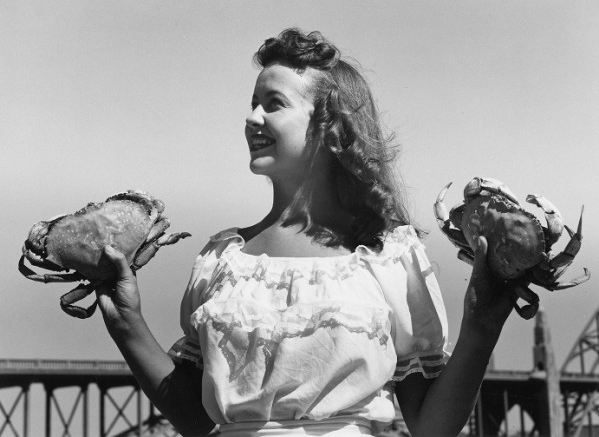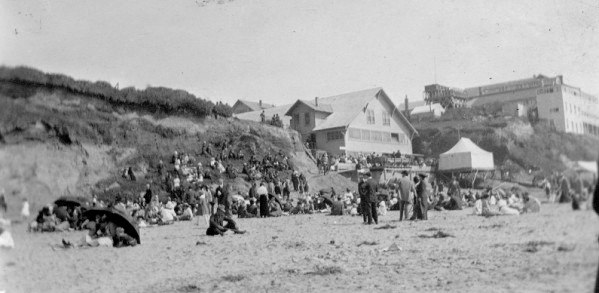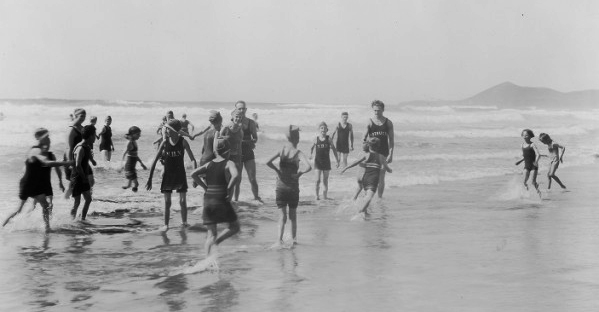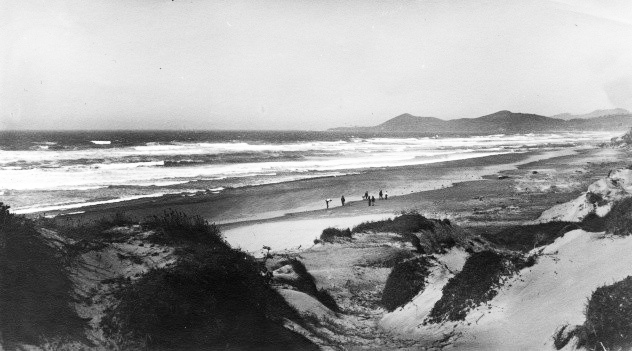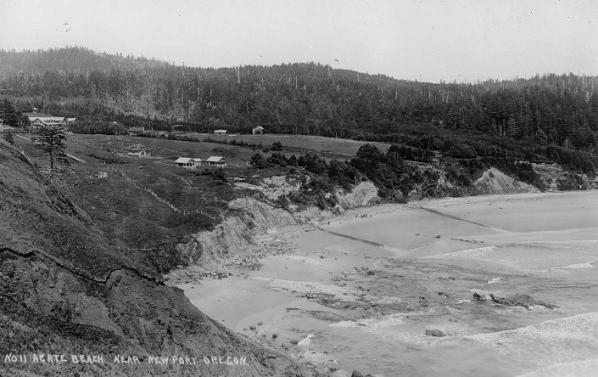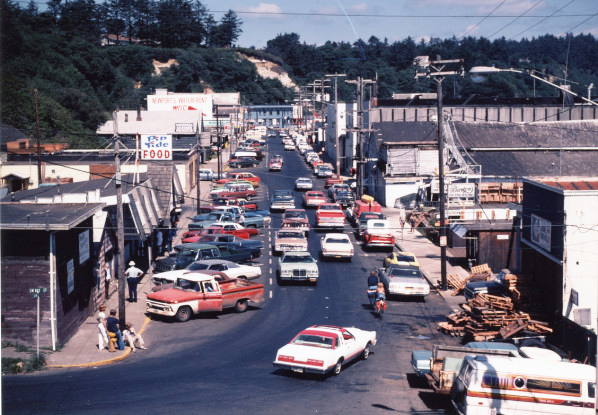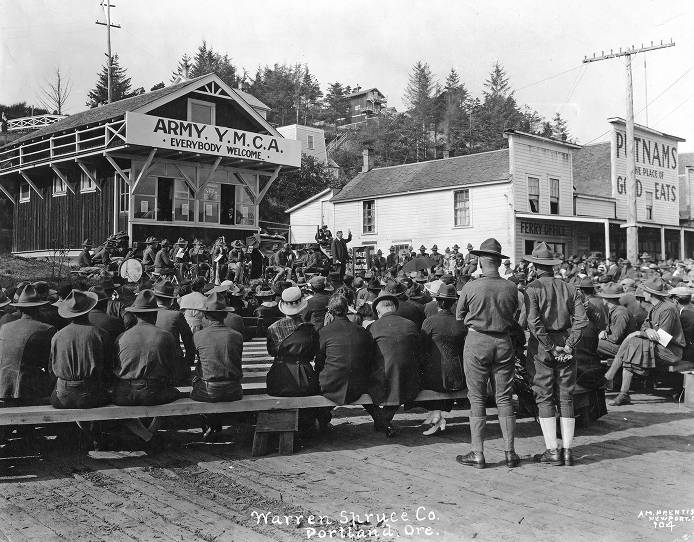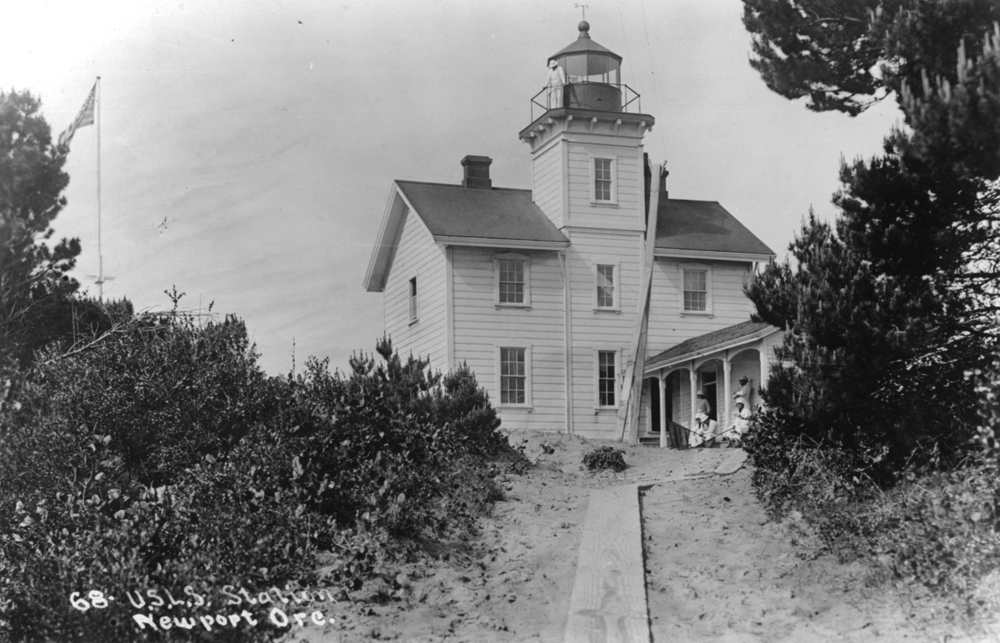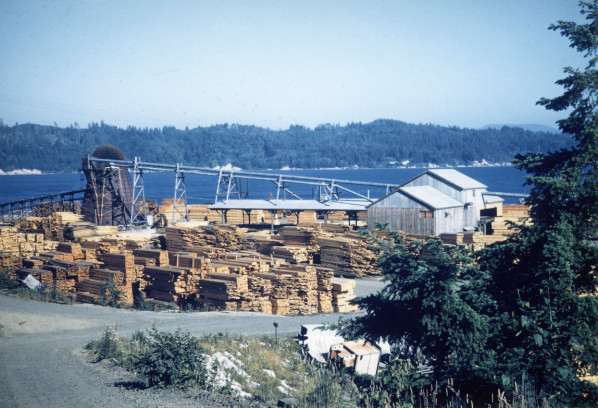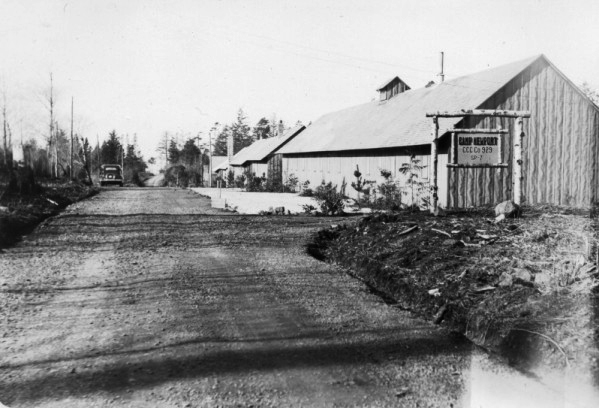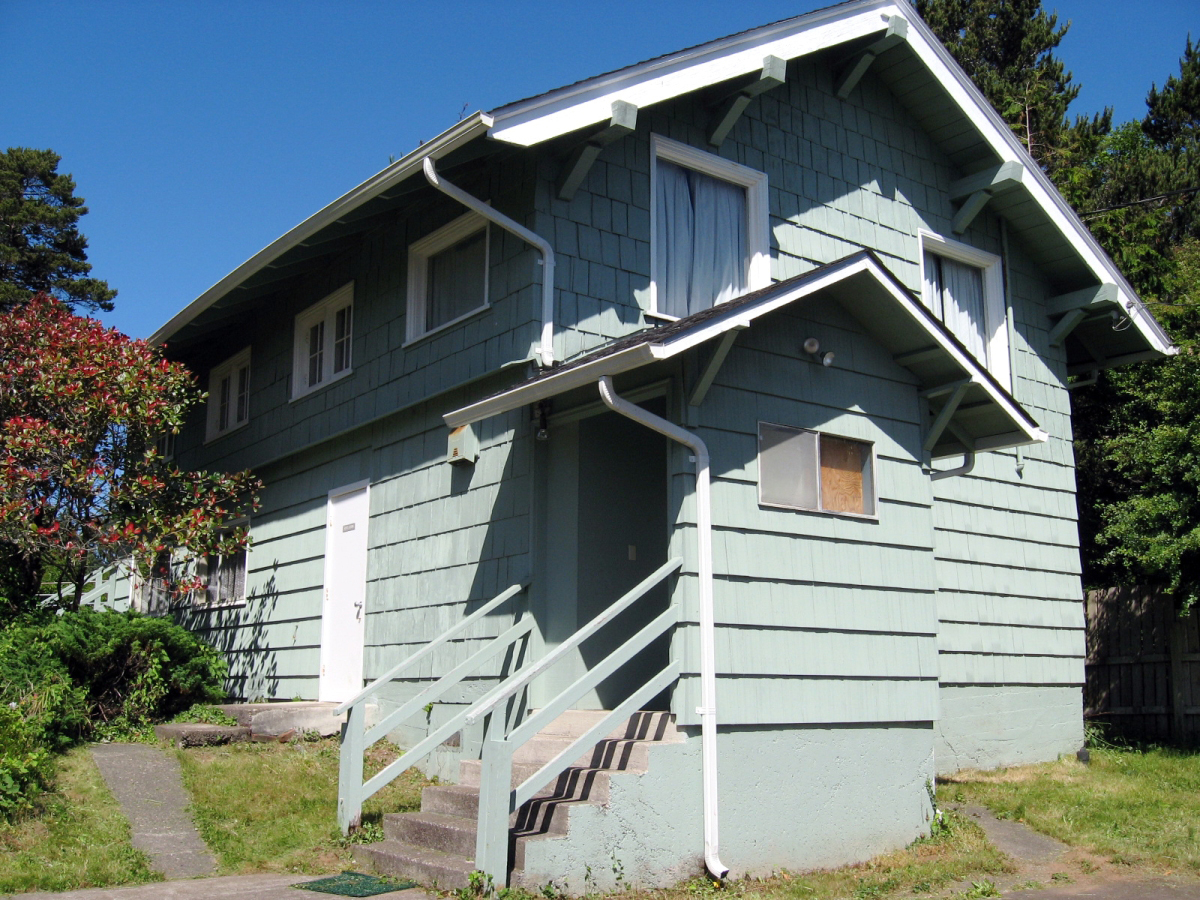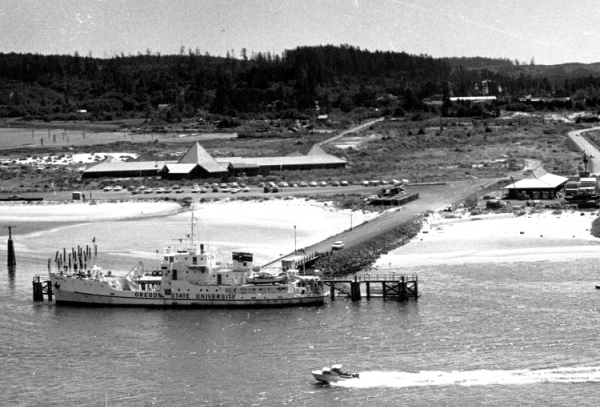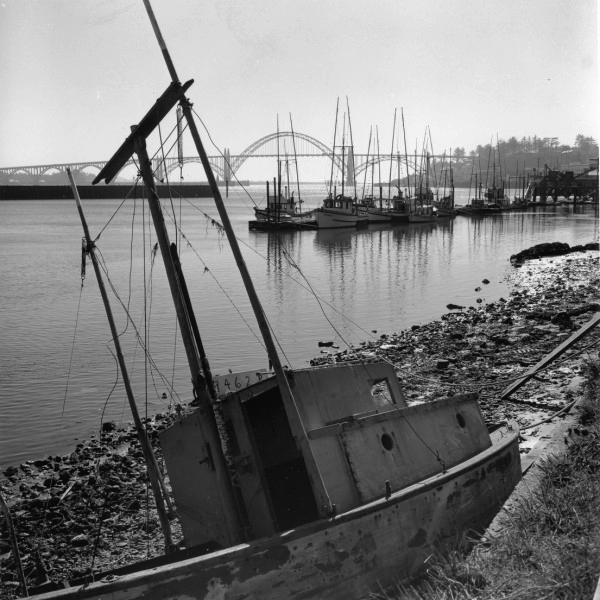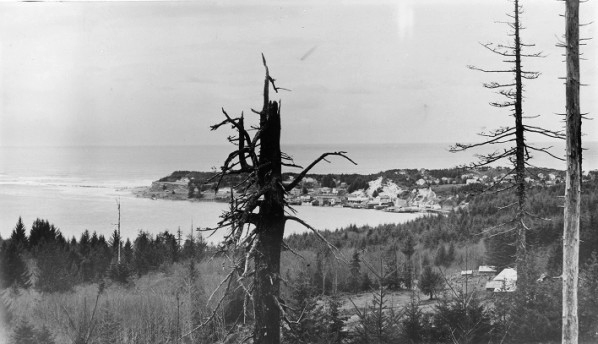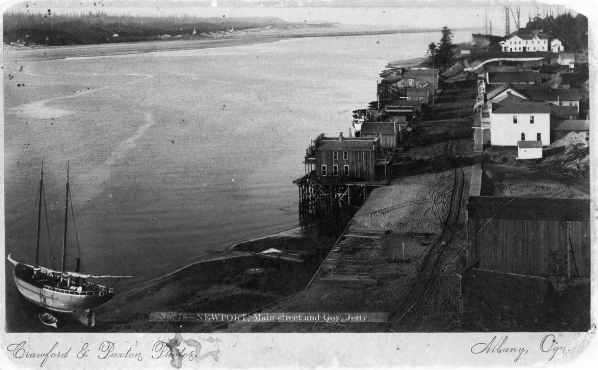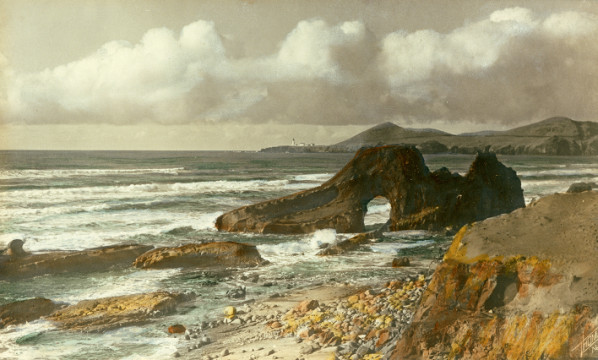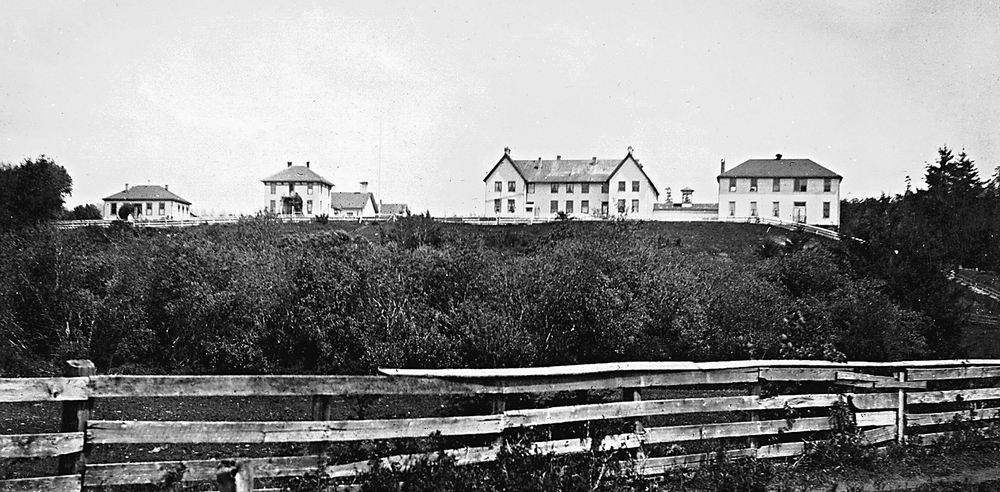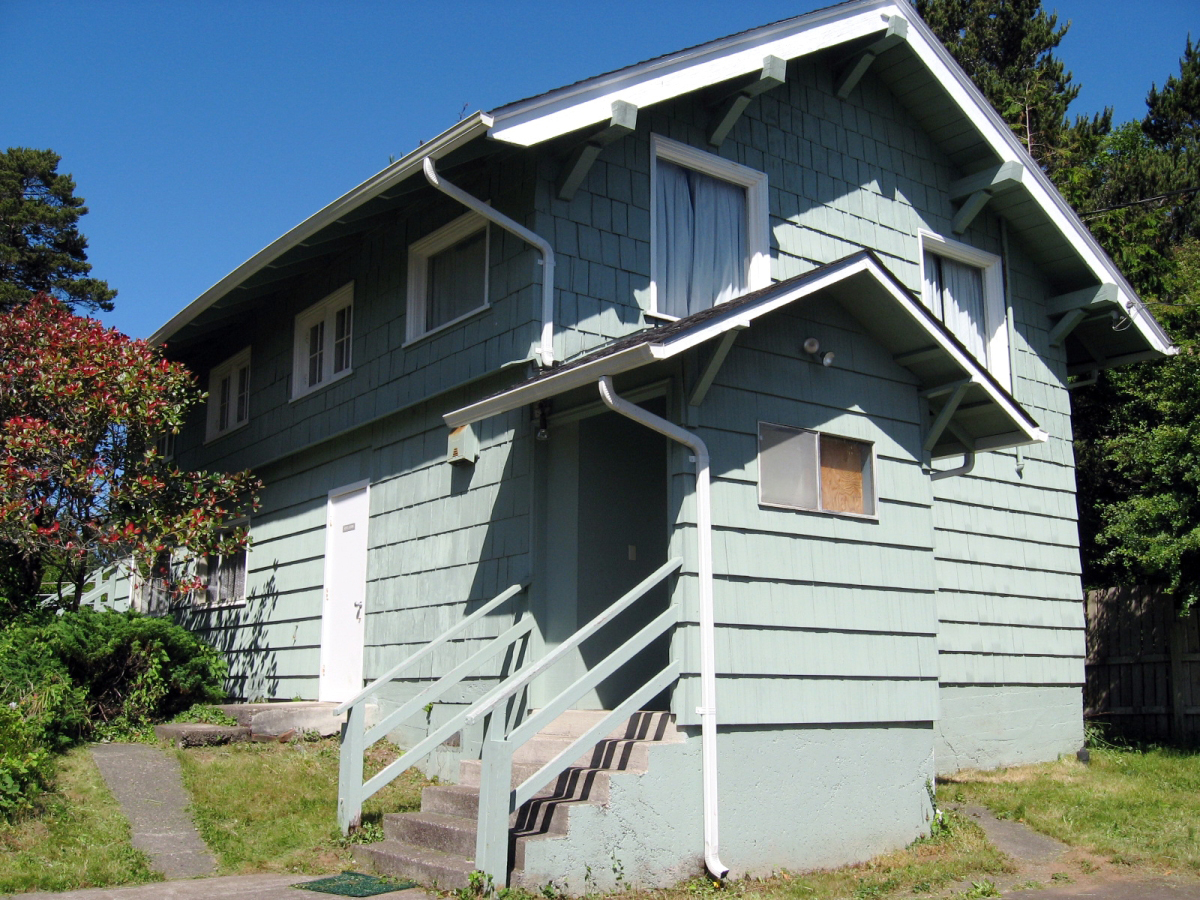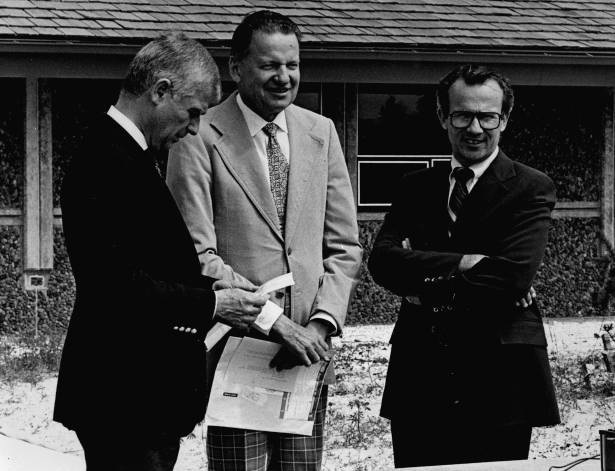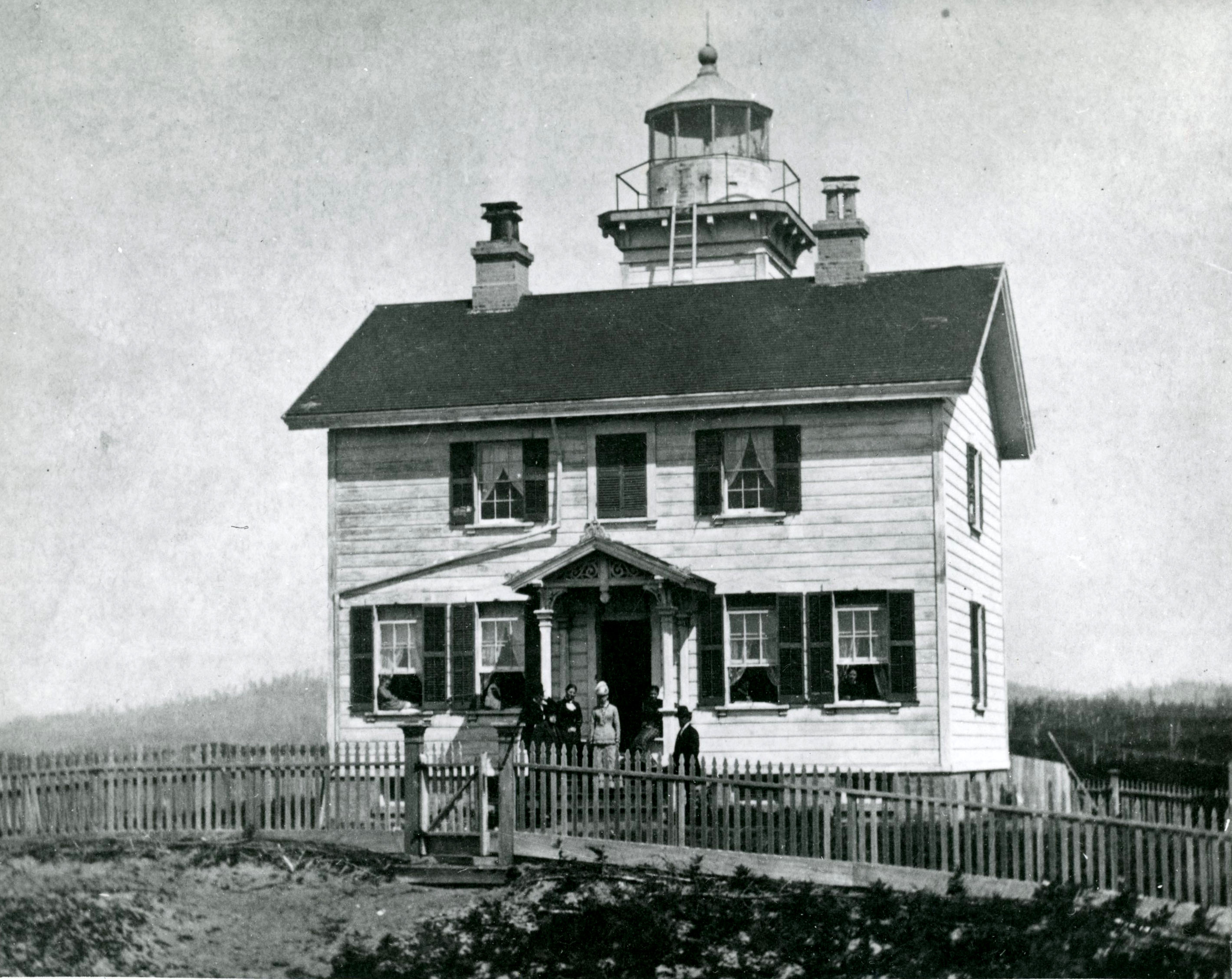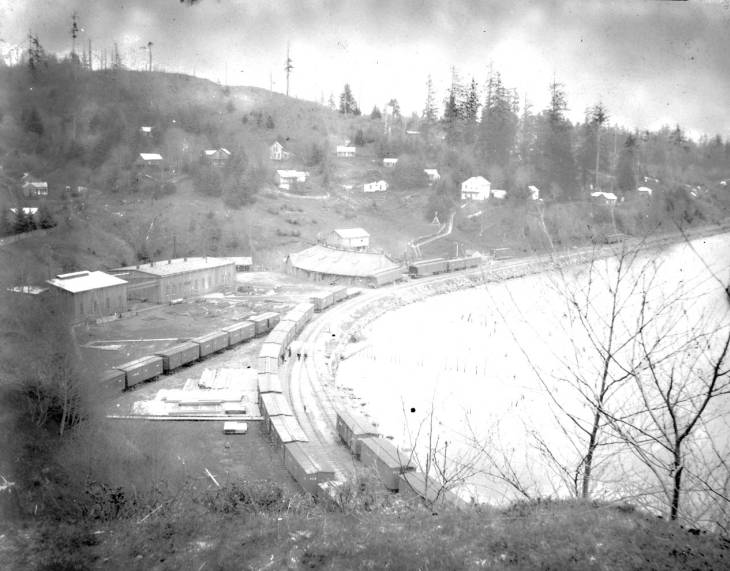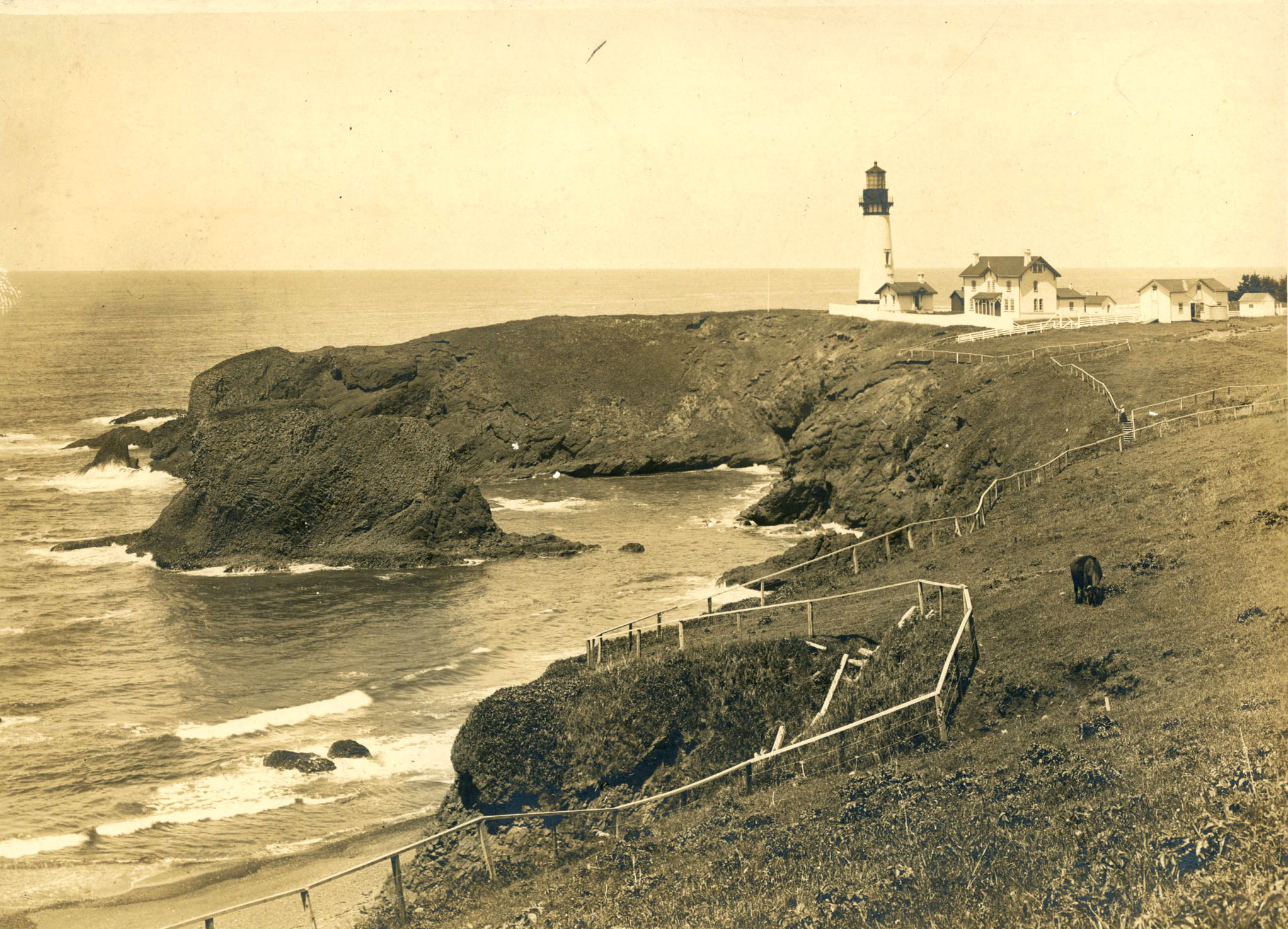Newport, with a population of about 10,256, is the largest city in Lincoln County and, since 1952, the county seat. The largest minority population is Hispanic, at about 20 percent of the population. Tourism, fishing, and shipping are the major industries.
Situated on the coast west of the Coast Range, Newport has the advantage of a major bay. Freshwater and saltwater species flourished in the early years and continue to provide a livelihood for the largest commercial fishing fleet in Oregon. Fisheries help control the harvest of salmon, halibut, and crab. They also bring in tuna, shrimp, Dungeness crab, flounder, sole, rockfish, and lingcod. Newport has a thriving charter fishing and whale-watching business.
Newport sits on land that once was the home of the Yacona Indians, whose history can be documented for at least three thousand years. By the time the Coast Reservation was established in 1855, relocating more than twenty tribes from Oregon and northern California, the Yacona population had been nearly decimated from disease and forest fires.
The town developed around the Yaquina Bay area, which opened to white settlement in 1866 and took a large parcel of land out of the reservation. Sam Case, a former soldier on the Coast Reservation, claimed the land at the northwest opening of Yaquina Bay and built the Ocean House, a hotel named after a favorite hotel of his in Rhode Island. He also named the new settlement Newport after a town in Rhode Island. Newport incorporated as a city in 1882.
Newport has two lighthouses, necessary because of early shipping activity, which included importing supplies for the Coast Reservation and exporting oysters, fish and seafood, and logs. Yaquina Bay Lighthouse, which opened in 1871, is owned by Oregon State Parks and is open to the public. It was decommissioned and its duties taken over in 1874 by the Yaquina Head Lighthouse, which is owned by the Bureau of Land Management. The light is still operational, and an interpretive center and the lighthouse are open to the public.
Travelers to Yaquina Bay before 1884 usually took a boat from Elk City. In 1884, the railroad was completed as far as Yaquina City, a town created by railroad developers up the bay from Newport. Newport’s founding fathers lost their opportunity to extend the railroad to their town when they could not agree on a price for the land.
Tourism increased after the railroad opened, and the Nye Beach area began to develop. The oceanfront area is named after John Nye who claimed the land in 1866. Hotels, hot sea baths, and a natatorium were built in the late 1800s and early 1900s. The Sylvia Beach Hotel remains from those years and is on the National Register of Historic Places. The Nye Beach area continues as a tourist mecca, with specialty shops, an accessible beach, lodging, and restaurants.
World War I demonstrated the need for a good north-south road to transport people and supplies. In 1919, Ben Jones, the representative from the district, introduced a bill in the legislature to build a coast highway. Construction of the Roosevelt Coast Military Highway got underway that year. Designated Highway 101, the Coast Highway divides Newport and is the town’s downtown area, stretching from South Beach to Agate Beach.
In 1931, the Oregon Coast was feeling the effects of the Great Depression. Conditions were harsh, but the federal Recovery Act brought work to the area, including construction of the Yaquina Bay Bridge, the last link on the Coast Highway. Completed in 1936, the bridge made it possible for people to drive automobiles across the bay instead of ferrying their cars. After World War II, Newport continued to rely on tourism, fishing, and shipping. A Crab Festival and, later, Loyalty Days, which continues today, brought people to the area.
Newport has become a center for marine research and is home to Oregon State University’s Hatfield Science Center and, since 2011, the National Oceanic and Atmospheric Administrations Marine Operations Center-Pacific. The Oregon Coast Aquarium, which opened in 1992, is one of the top ten aquariums in the nation, with about 450,000 visitors a year. These facilities are all located on the south side of Yaquina Bay.
The north side of Yaquina Bay is both a working bay front and a tourist attraction. Boat docking, fish processing, and other commercial ventures co-exist with shops, restaurants, and fish markets.
-
![Newport, 1950s.]()
Newport, street and cars, 1950s.
Newport, 1950s. Oreg. State Univ. Archives, A 78.86.1a
-
![Abbey Hotel, Bay Blvd., Newport, about 1935.]()
Newport, Abbey Hotel, ca 1935.
Abbey Hotel, Bay Blvd., Newport, about 1935. Oreg. State Univ. Archives, SC 1273 N 325
-
![Crab Festival, Newport, May 1947.]()
Newport, Crab Festival, May 1947.
Crab Festival, Newport, May 1947. Photo Roger Hart, Oreg. State Univ. Archives, A 82.15.39 SC 2306 N 159E2
-
![Miss Newport 1947 Helen McFetridge, Aug. 1947.]()
McFetridge, Helen, Ms. Newport, Aug 1947.
Miss Newport 1947 Helen McFetridge, Aug. 1947. Photo Roger Hart, Oreg. State Univ. Archives, A 89.57.24 SC 2007 N 222P
-
![Halibut catch from boat "Ollie S" on Newport docks, July 1912.]()
Newport, halibut fishers, Jul 1912.
Halibut catch from boat "Ollie S" on Newport docks, July 1912. Oreg. State Univ. Archives, SC 1196 N 2137
-
![Mos's restaurant, 622 SW Bay Blvd., Newport, about 1975.]()
Newport, Mo's, ca 1975.
Mos's restaurant, 622 SW Bay Blvd., Newport, about 1975. Oreg. State Univ. Archives, N 221-F1
-
![Filming "Sometimes a Great Notion," Newport, summer 1970.]()
Newport, filming Sometimes Great Notion, 1970.
Filming "Sometimes a Great Notion," Newport, summer 1970. Oreg. State Univ. Archives, N 221F3
-
![Nye Beach and Natatorium, Newport, about 1910.]()
Newport, Nye Beach Natatorium, ca 1910.
Nye Beach and Natatorium, Newport, about 1910. Oreg. State Univ. Archives, A 87.112.11
-
![Nye Beach Parade, Newport, 1901.]()
Newport, Nye Beach parade, 1901.
Nye Beach Parade, Newport, 1901. Photo A.L. Thomas, Oreg. State Univ. Archives, A 74.15.1 SC 34 N 3354
-
![Nye Beach, Newport, about 1921-1922.]()
Newport, Nye Beach, bathers, ca 1921.
Nye Beach, Newport, about 1921-1922. Photo A.M. Prentiss, Oreg. State Univ. Archives, A 86.127.45
-
![Nye Beach, Newport, about 1920.]()
Newport, Nye Beach with cars, ca 1920.
Nye Beach, Newport, about 1920. Photo A.L. Thomas, Oreg. State Univ. Archives, SC 1356 N 162-K
-
![Beach at Newport with Yaquina Head in the distance, about 1900.]()
Newport, beach and Yaquina Head, 1900.
Beach at Newport with Yaquina Head in the distance, about 1900. Oreg. State Univ. Archives, E. E. Wilson Photo Collec., P101:1036
-
![Agate Beach, south of Yaquina Head, about 1912.]()
Newport, Agate Beach, ca 1912.
Agate Beach, south of Yaquina Head, about 1912. Oreg. State Univ. Archives, SC 732 N 2579
-
![Bay Blvd. (Front St.) Newport, Aug. 1977.]()
Newport, Bay Blvd, Aug 1977.
Bay Blvd. (Front St.) Newport, Aug. 1977. Photo Roger Hart, Oreg. State Univ. Archives, A 83.53.16 N 128E3
-
![Front St. (Bay Blvd.) Newport, April 1959.]()
Newport, bayfront, Apr 1959.
Front St. (Bay Blvd.) Newport, April 1959. Photo Roger Hart, Oreg. State Univ. Archives, SC 1271 N 222L
-
![YMCA soldiers' band and song meeting at Newport, 1918.]()
Newport, soldiers and band at, 1918.
YMCA soldiers' band and song meeting at Newport, 1918. Oreg. State Univ. Archives, Gerald W. Williams Collection, Spruce Prod. Div. album, WilliamsG:Spruce Prentiss 104
-
![U.S. Life-Saving Service Station Yaquina, 1917.]()
USLSS Sta Yaquina lighthouse, 1917.
U.S. Life-Saving Service Station Yaquina, 1917. Courtesy U.S. Coast Guard Headquarters, Yaquina Bay file -
![McLean Point, Newport, July 1953.]()
Newport, McLean Pt, July 1953.
McLean Point, Newport, July 1953. Photo Roger Hart, Oreg. State Univ. Archives, A 95.23.100
-
![Civilian Conservation Corps camp 929, Newport, 1935.]()
CCC Camp Newport, 1935.
Civilian Conservation Corps camp 929, Newport, 1935. Oreg. State Univ. Archives, Royal Jackson Papers
-
![Ernest Bloch House, 116 NW. Gilbert Wy., Newport, summer 2008.]()
Ernest Bloch House, Newport, 2008.
Ernest Bloch House, 116 NW. Gilbert Wy., Newport, summer 2008. Photo Mark McConnell, Oreg. State Hist. Preserv. Ofc. and Univ. of Oreg. Libr., OR_LincolnCounty_BlochHouse13
-
![Marine Science Center and research vessel Yaquina, 1969.]()
Newport, Hatfield MSC, 1969.
Marine Science Center and research vessel Yaquina, 1969. Oreg. State Univ. Archives, P057:4139
-
![Yaquina Bay, Newport, March 1960.]()
Newport, bayfront and boats, Mar 1960.
Yaquina Bay, Newport, March 1960. Photo Roger Hart, Oreg. State Univ. Archives, A 95.23.1029 N 1638
-
![Looking west upon Newport bayfront and Yaquina Bay harbor entrance, 1910s.]()
Newport, Yaquina Bay, 1910.
Looking west upon Newport bayfront and Yaquina Bay harbor entrance, 1910s. Photo A.L. Thomas, Oreg. State Univ. Archives, A 99.47.4 N 2359
-
![Newport bayfront, about 1895.]()
Newport, bayfront, ca 1895.
Newport bayfront, about 1895. Oreg. State Univ. Archives, A 893.72 SC 1616 N 5C3
-
![Bay, jetty, and Front St., Newport, 1900.]()
Newport, bayfront, 1900.
Bay, jetty, and Front St., Newport, 1900. Photo Crawford & Paxton , Oreg. State Univ. Archives
-
![Bay Blvd., Newport, 1912.]()
Newport, Bay Blvd., 1912.
Bay Blvd., Newport, 1912. Photo Wesley Andrews, Oreg. State Univ. Archives, A 893-82
-
![Bay Blvd. and Yaquina Bay Bridge, Newport.]()
Newport, Yaquina Bay Bridge, bb000085.
Bay Blvd. and Yaquina Bay Bridge, Newport. Oreg. Hist. Soc. Research Libr., bb000085
-
![Jump-Off Joe, Newport, 1913.]()
Newport, Jump Off Joe, 1913.
Jump-Off Joe, Newport, 1913. Photo A.L. Thomas, Oreg. State Univ. Archives, N 174-X
Related Entries
-
Coast Indian Reservation
Beginning in 1853, Superintendent of Indian Affairs Joel Palmer negotia…
-
![Ernest Bloch House (Newport)]()
Ernest Bloch House (Newport)
Perched on a high bluff in Newport overlooking Agate Beach and the Paci…
-
![Hatfield Marine Science Center and Visitor Center]()
Hatfield Marine Science Center and Visitor Center
The Hatfield Marine Science Center (HMSC) on Yaquina Bay in Newport was…
-
![US 101 (Oregon Coast Highway)]()
US 101 (Oregon Coast Highway)
Many places on the Oregon coast were virtually inaccessible in the earl…
-
![Yaquina Bay Lighthouse]()
Yaquina Bay Lighthouse
Yaquina Bay Lighthouse, built in 1871, is currently the only wooden lig…
-
![Yaquina City]()
Yaquina City
Yaquina City was a railroad boomtown on the upper reaches of Yaquina Ba…
-
![Yaquina Head Lighthouse]()
Yaquina Head Lighthouse
The U.S. Lighthouse Board completed Yaquina Head Lighthouse in 1873 on …
Related Historical Records
Map This on the Oregon History WayFinder
The Oregon History Wayfinder is an interactive map that identifies significant places, people, and events in Oregon history.
Further Reading
Disse, Diane, Jodi Weeber, Loretta Harrison, and the Lincoln County Historical Society. Images of America Series: Newport. Mount Pleasant, S.C.: Arcadia Publishing, 2010.
Price, Richard L. Newport, Oregon, 1866-1936: Portrait of a Coast Resort. Newport, Ore.: Lincoln County Historical Society, 1975.
Troxel, Robert. The First 100 Years: Newport, Oregon, 1882-1982. Newport, Ore.: Newport Chamber of Commerce, 1982.


